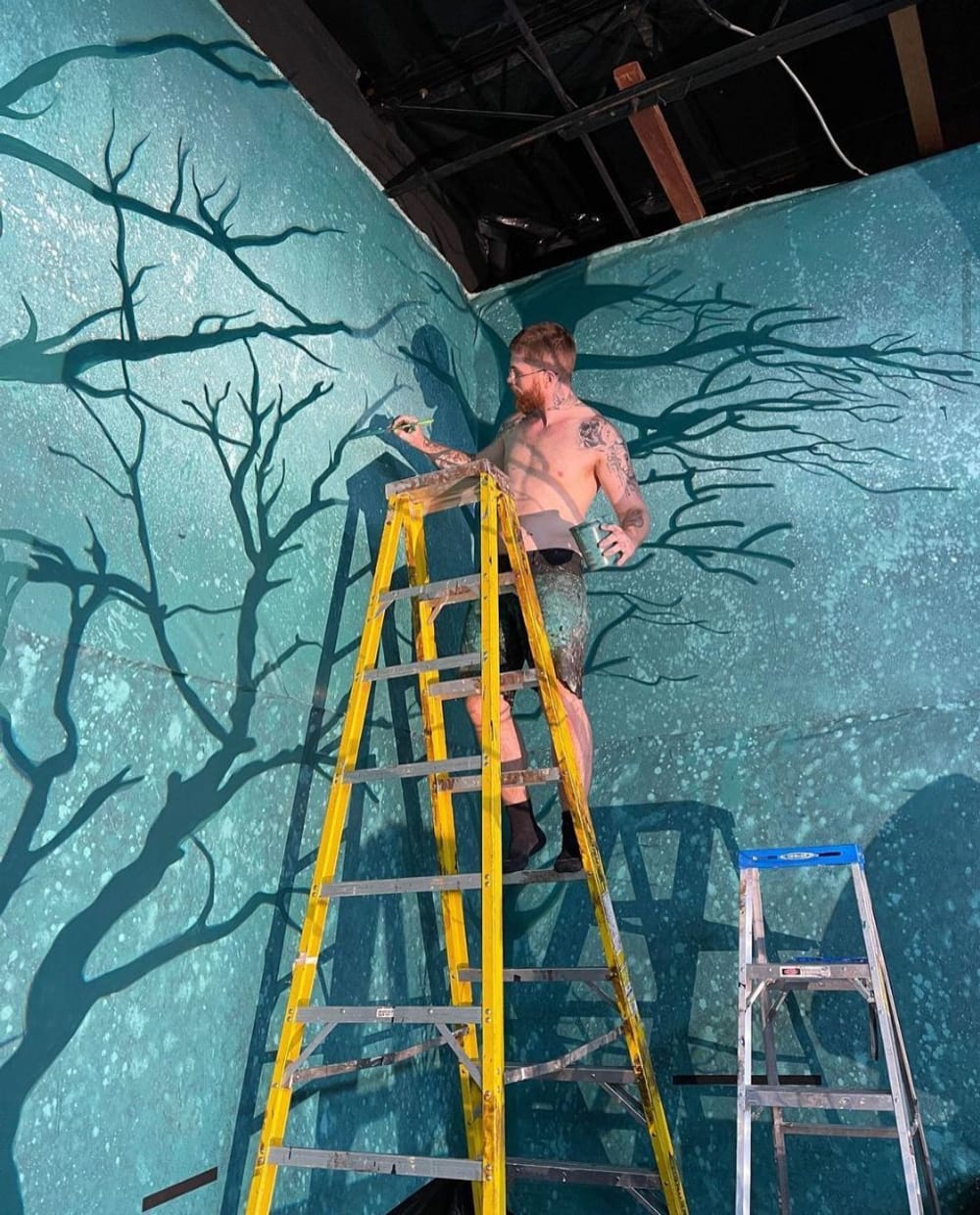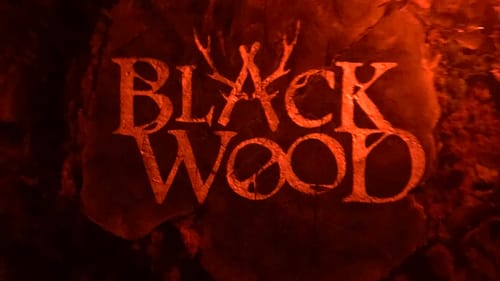Stay in the Loop
BSR publishes on a weekly schedule, with an email newsletter every Wednesday and Thursday morning. There’s no paywall, and subscribing is always free.
What does it mean to empower survivors?
A closer look at depictions of domestic violence in Gunnar Montana’s BLACK WOOD

Content note: this piece deals with domestic violence and contains spoilers for BLACK WOOD. Here’s our dance review.
While we waited to enter Gunnar Montana’s BLACK WOOD at the Latvian Society, lit by flickering artificial candles, my friend and I were having an ordinary conversation about if and how I can stay safe from a man who recently harassed and threatened me at home. Next to us, a poster on the wall warned that BLACK WOOD “contains brief imagery of domestic violence that some audience members may find distressing” and gave a phone hotline.
Our conversation was ordinary because domestic violence is ordinary: the National Coalition Against Domestic Violence estimates that one-quarter of all women (and about one in seven men) have experienced “severe physical violence” (like beating or strangling) at the hands of an intimate partner—which, in BLACK WOOD, gets the most graphic treatment I have ever seen onstage.
Domestic violence in dance
In the middle act of Montana’s latest show, the excellent stagecraft reveals a living room under misty, glowering lights. A slight, barefoot woman in a skimpy dress (Jessica Daley) sweeps the floor and cringes when a muscular, bearded man (Montana) barrels in the door. She shrinks as he fondles her and then slumps into an armchair until her broom falls and startles him. In a series of jaw-dropping choreographic vignettes, he punches her, throws her on the ground and heaves himself over her, and chokes her against the wall at center stage, her limbs scrambling like a panicked bug.
Suddenly, she pulses with telekinetic power (more world-class stagecraft and choreography) and escapes him. A sexy, gore-licking coven of witches welcome and comfort her, and then they band together to torture the man, ultimately stabbing him and leaving him to the horrible embrace of an antlered monster.
Who’s telling the story?
Later, I asked Montana whether the show was developed with input or partnership with professional or peer advocacy groups for domestic violence survivors.
He answered via email that the scene described above is “a direct interpretation of an experience that one of our cast members had.” The choreography was developed in collaboration with survivors in the ensemble: “Every person’s experience with domestic violence is different, but we wanted to ensure that what we put onstage came from an authentic place,” Montana added.
Especially with a content warning, I can now (after years of recovery) encounter depictions of domestic violence without having a panic attack. But I train a sharp eye on those images and how they are handled. Montana told me that BLACK WOOD “is not about domestic violence,” but given the importance of this devastating vignette to the show’s narrative of avenging witches, my perspective as an audience member differs—and for both its duration and impact, I would not call the scene “brief.”
What reality are we escaping?
The press release touts Montana’s commitment to empowering “females” (a usage I wish was confined to the red-pilled stews of the platform formerly known as Twitter). In his follow-up with me, Montana added that the show “is about strength, resilience, and the power that comes when people—especially women—support, lift up, and protect one another in the face of adversity.”

This supernatural revenge fantasy does have a dark exhilaration. In that sense, the show delivers the “escape from reality” promised in its promotional copy: real-life abusers do not face a supernatural maw of vengeance or, often, even a legal or social one. If we can get free of them at all, abusers usually move on with their lives, cultivating their next victims as we cope with years of life-altering trauma. Every time a public figure credibly accused of assault or abuse whines for a few months about cancel culture to his millions of followers and then lands a big new movie or tour, survivors remember that nothing has changed.
So how can women (or survivors of any gender) in the BLACK WOOD audience escape reality? Most cis women and trans folks I know have experienced a spectrum of harassment, abuse, or assault at the hands of men, whether it’s a partner, date, family member, colleague, customer, or (more rarely) a stranger. I have been temporarily homeless because of abusive men. Twice. When I wrote about men calling me a bitch on the street, a reader replied that maybe I am a bitch.
What really empowers women?
I believe empowerment is a clear path to ending the violence at its source. Here’s what would be a truly original escape from our reality: cis men taking swift collective action to defend the victims of gendered violence and ensuring it never happens again. The pleasures of solidarity between genders in a treacherous world could be a thrilling topic for a choreographer with Montana’s imagination, his emotional and stylistic range, his gender-expansive performances, and his ensemble’s stunning technique.
I left the BLACK WOOD venue wondering what Montana wants us to take away from the show since his ensemble portrays not just a dark, witchy dream but a real-life tragedy that affects one in four women. Could the nearly two-month run of the show be an opportunity to educate audiences on domestic violence, encourage male allies, or offer resources to survivors?
I asked Montana if the show will be making any specific connections like this, and the answer seems to be no. “Our job is to spark feelings and emotions that may prompt our audience to take action,” he replied. The performing arts is “where difficult conversations can lead to change. If BLACK WOOD is fortunate enough to be part of that process, then we have done our job as artists.” But some creators tackling difficult topics (like abuse, racism, or mental illness) are proving they can do more, even if it’s just a well-placed essay in the playbill, a talkback, resources in the lobby, or partnerships for fundraising or visibility. We at BSR would love to see more of this.
The BLACK WOOD team depicts domestic violence and fantastical vengeance in the name of empowering women, but it strikes me as a stylized fictional catharsis that sidesteps any real action or challenge to the status quo. I don’t want to deny or impugn different ways of recovering from abuse. But as a survivor, my own fear is that BLACK WOOD makes a haunted house out of the trauma of millions of women.
For resources on how to recognize and fight domestic violence or get help, check out Philly’s Women Against Abuse.
At top: Gunnar Montana works on the set of his BLACK WOOD. (Photo courtesy of the artist.)
What, When, Where
BLACK WOOD. By Gunnar Montana. $45. Through October 31, 2023, at the Latvian Society, 532 N 7th Street, Philadelphia. (215) 413-1318 or phillyfringe.org for Fringe tickets; gunnarmontana.com for tickets after Wednesday, September 27.
Accessibility
The Latvian Society theater is upstairs, and the entry to BLACK WOOD is through a narrow, winding corridor dressed with obstacles on the floor as part of the experience. There is a stairlift, but it was not in use. The performance features strobe and smoke effects.
Sign up for our newsletter
All of the week's new articles, all in one place. Sign up for the free weekly BSR newsletters, and don't miss a conversation.

 Alaina Johns
Alaina Johns